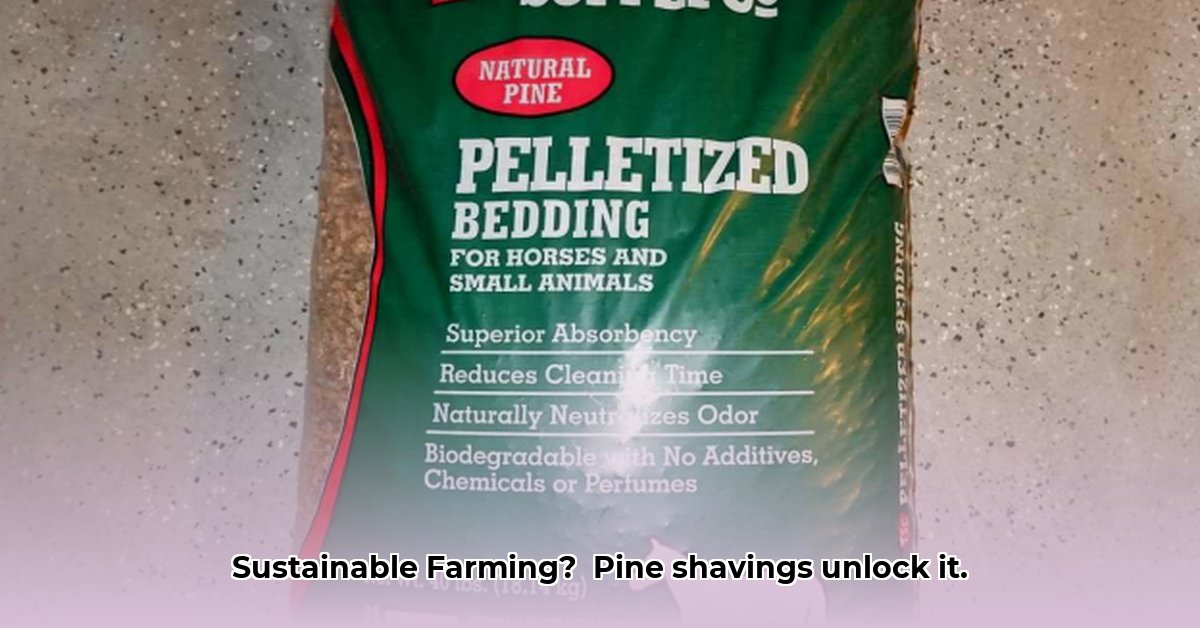
Pine Shavings: A Potential Resource for Sustainable Agriculture
The pursuit of sustainable agricultural practices necessitates exploring innovative and eco-friendly solutions. One under-examined possibility lies in the utilization of readily available pine shavings, easily sourced from retailers like Tractor Supply. For more information on equine bedding options from Tractor Supply, check out their website. While definitive scientific evidence remains limited, the potential benefits warrant further investigation. This guide provides a framework for farmers and researchers to explore the viability of pine shavings in various applications.
Potential Uses of Pine Shavings in Sustainable Agriculture
Though research is still ongoing, pine shavings offer several potential applications in sustainable agriculture:
Livestock Bedding: Pine shavings could serve as a cost-effective bedding material for livestock, potentially improving comfort and hygiene. However, further research is needed to evaluate their long-term effects on animal health and potential impacts on ammonia emissions. Are there any undetected negative impacts on animal health? This requires further investigation.
Soil Amendment: The organic matter in pine shavings might improve soil structure, aeration, and water retention over time. However, the rate of decomposition and its impact on soil nutrient levels need careful study. Does the decomposition of pine shavings release beneficial nutrients into the soil or does it have a negative effect? This requires further testing on different soil types.
Mulch: Pine shavings could act as a mulch, suppressing weeds, conserving moisture, and moderating soil temperature. Research is needed to determine their effectiveness compared to other mulching materials and their potential impact on soil pH. What is the long-term impact of using pine shavings as soil mulch on crop yield and soil health? Long-term studies need to be conducted.
Actionable Steps for Farmers: Conducting On-Farm Trials
Farmers looking to explore the potential of pine shavings should follow a structured approach:
Small-Scale Trials: Begin with small-scale tests on a limited portion of your land or with a small group of animals. This approach minimizes risk while allowing for preliminary data collection.
Data Collection: Meticulously record relevant data:
- Soil: Monitor pH, nutrient levels (nitrogen, phosphorus, potassium), and moisture content before and after applying pine shavings. Utilize soil testing kits and, if possible, laboratory analysis for a more comprehensive evaluation.
- Livestock: Track animal health, including weight gain, feed consumption, any signs of illness, and behavioral changes. Detailed records are essential.
- Crops: Measure crop yields in areas where pine shavings were used as mulch compared to control areas without the shavings. Pay attention to plant growth throughout the growing season.
Record Keeping: Maintain a detailed log of all procedures, observations, and results. This data is crucial for assessing the efficacy of using pine shavings and for potential future publication. Use a standardized format (spreadsheet, online database) to ensure consistency and ease of analysis.
Control Groups: Ensure you maintain rigorous control groups (areas not treated with pine shavings) to allow for accurate comparison of your results. This allows for unbiased determination of the pine shavings' true effect.
Research Opportunities: Addressing Knowledge Gaps
Further research is crucial to fully understand the potential and limitations of using pine shavings in agriculture. Key areas requiring further study include:
Life-Cycle Assessment: A thorough life-cycle assessment is necessary to evaluate the environmental impact of pine shaving production, transportation, and disposal. This will contribute to a holistic understanding of sustainability.
Comparative Analysis: Comparative studies should evaluate the effectiveness of pine shavings as a soil amendment or mulch, contrasting their performance with other commonly used materials (e.g., straw, compost). This comparative analysis would allow for a more informed decision on the best path forward.
Long-Term Soil Health Impacts: Long-term studies are needed to rigorously assess the effects of pine shavings on soil health, microbial communities, and overall soil fertility over several growing seasons. This research will inform long-term sustainable use.
Conclusion: A Call for Collaboration
While the potential benefits of utilizing pine shavings in sustainable agriculture are promising, thorough investigation is crucial before widespread adoption. By conducting small-scale trials, diligently collecting data, and engaging in collaborative research, we can collectively build a robust body of evidence to inform the responsible and effective use of this readily available resource. The future of sustainable agriculture may well depend on such innovative solutions.